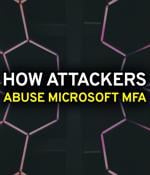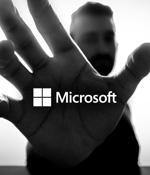Security News

The threat actor behind the Twilio hack used their access to steal one-time passwords delivered over SMS from customers of Okta identity and access management company. Okta provides its customers with multiple forms of authentication for services, including temporary codes delivered over SMS through Twilio.

The threat actor behind the Twilio hack used their access to steal one-time passwords delivered over SMS from customers of Okta identity and access management company. Okta provides its customers with multiple forms of authentication for services, including temporary codes delivered over SMS through Twilio.

A business email compromise scheme targeting CEOs and CFOs using Microsoft Office 365 combines phishing with a man-in-the-middle attack to bypass multi-factor authentication. These attacks take advantage of a Microsoft 365 design flaw that allows miscreants to compromise accounts with MFA enabled and achieve persistence in victims' systems by adding a new, compromised, authentication method allowing them to come back at any time.

More recently, Mandiant and Mitiga researchers have documented different approaches that allow attackers touse Microsoft MFA to their advantage. Attackers take over dormant Microsoft accounts and set up MFA. Douglas Bienstock, an IR manager at Mandiant, shared last week a new tactic by APT29 and other threat actors that involves taking advantage of the self-enrollment process for MFA in Azure Active Directory and other platforms.

Active adversaries are increasingly exploiting stolen session cookies to bypass multi-factor authentication and gain access to corporate resources, according to Sophos. "Over the past year, we've seen attackers increasingly turn to cookie theft to work around the growing adoption of MFA. Attackers are turning to new and improved versions of information stealing malware like Raccoon Stealer to simplify the process of obtaining authentication cookies, also known as access tokens," said Sean Gallagher, principal threat researcher, Sophos.

A new large-scale phishing campaign targeting credentials for Microsoft email services use a custom proxy-based phishing kit to bypass multi-factor authentication. The phishing campaign's targets include fin-tech, lending, accounting, insurance, and Federal Credit Union organizations in the US, UK, New Zealand, and Australia.

An ongoing, large-scale phishing campaign is targeting owners of business email accounts at companies in the FinTech, Lending, Insurance, Energy and Manufacturing sectors in the US, UK, New Zealand and Australia, Zscaler researchers are warning. The attackers are using a variety of tecniques and tactics to evade corporate email security solutions and a custom phishing kit that allows them to bypass multi-factor authentication protection to hijack enterprise Microsoft accounts.

SMB owners across the globe are still relying only on usernames and passwords to secure critical employee, customer, and partner data, according to the Global Small Business Multi-Factor Authentication Study released by the Cyber Readiness Institute. This Help Net Security video covers the highlights of these findings.

Once the attacker has the stolen credentials and session cookies, they can access the victim's email boxes and run a business email compromise campaign, in this case payment fraud, according to Microsoft security researchers. "While AiTM phishing isn't new, our investigation allowed us to observe and analyze the follow-on activities stemming from the campaign - including cloud-based attack attempts - through cross-domain threat data from Microsoft 365 Defender," researchers from the Microsoft 365 Defender Research Team and Microsoft Threat Intelligence Center wrote in a blog post.

AiTM phishing steals the session cookie, so the attacker gets authenticated to a session on the user's behalf regardless of the sign-in method the latter uses, researchers said. Attackers are getting wise to organizations' increasing use of MFA to better secure user accounts and creating more sophisticated phishing attacks like these that can bypass it, noted a security professional.